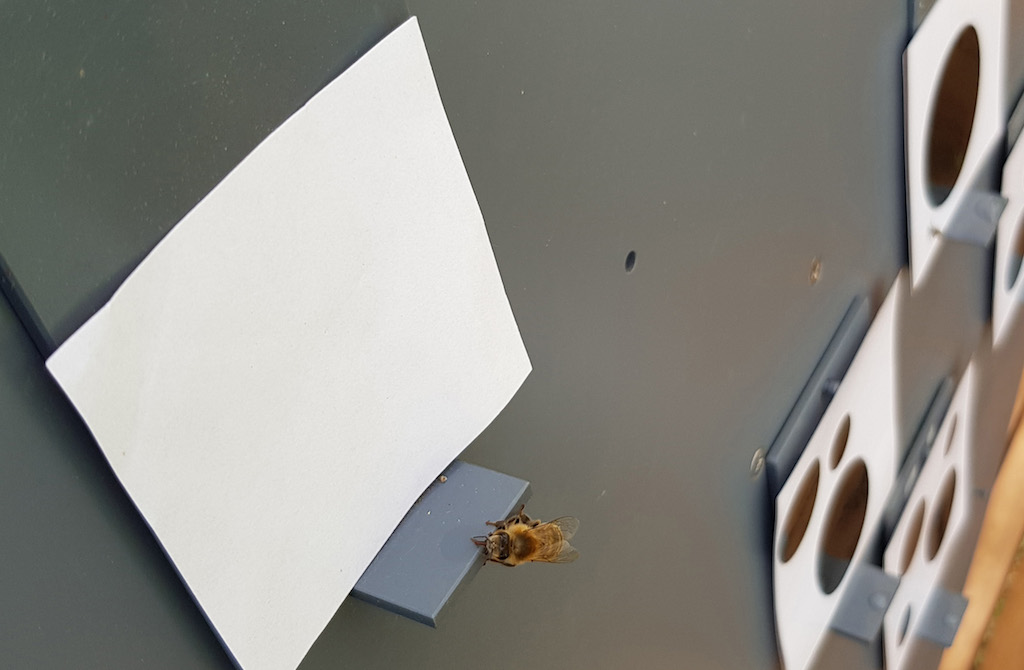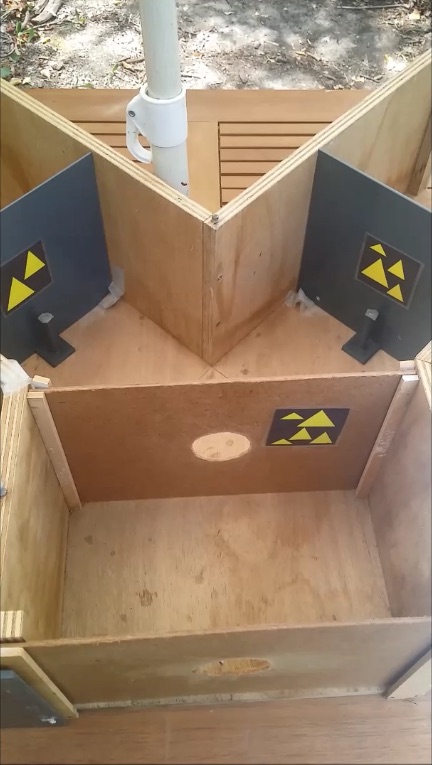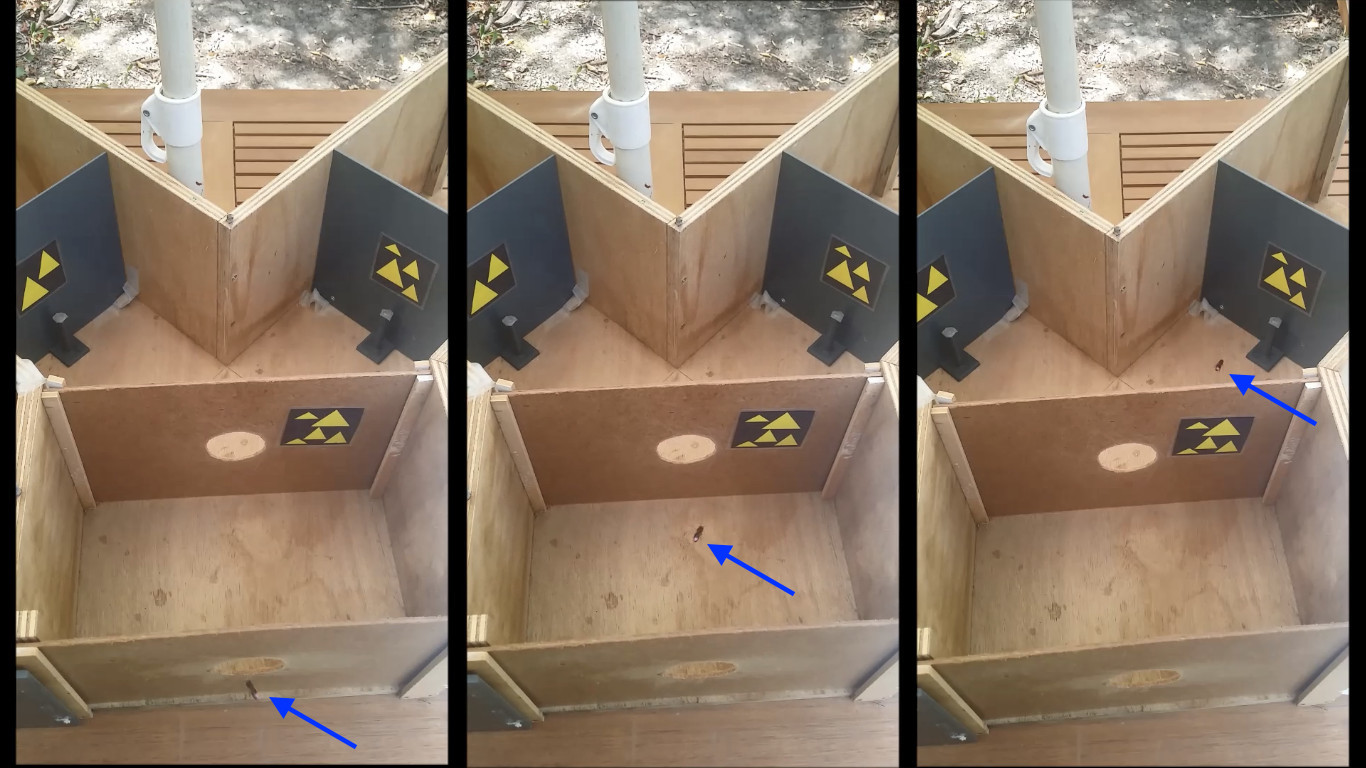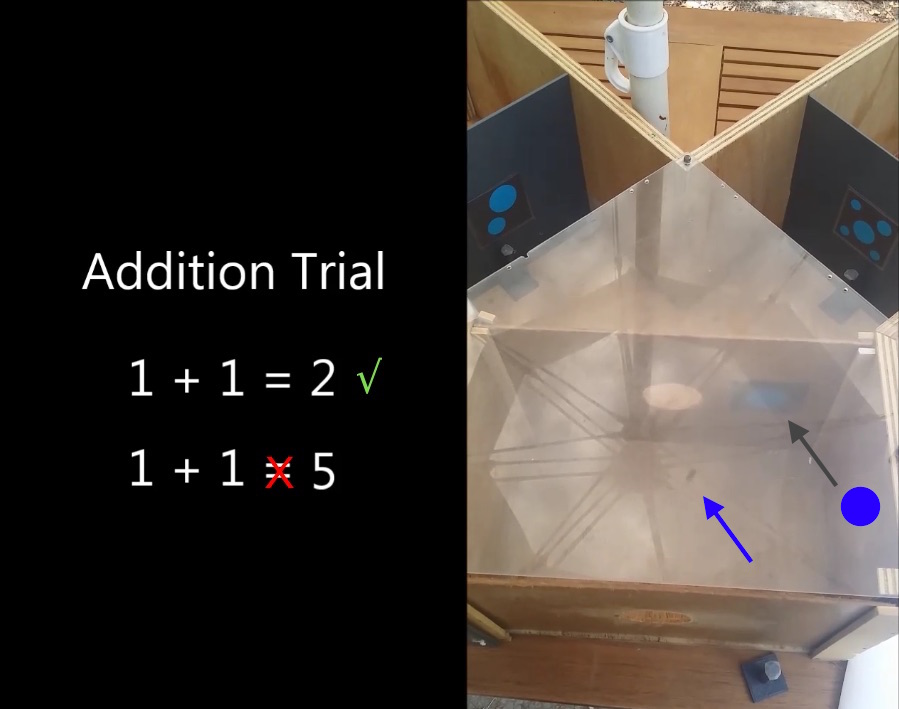Melbourne, Australia —(Map)
Last year, French and Australian scientists learned that bees could understand the idea of “zero”. Now the same scientists have discovered that bees can add and subtract.
Bees are smarter than many people think. They can count up to four. Through special dances they can tell each other how far away food is and in what direction.

(Source:RMIT.)
Still, last year’s news that bees could understand zero was a surprise. Before that, only a few animals, such as dolphins, monkeys, and some birds, had shown that they understood zero.
To learn if bees could do math, scientists at RMIT University in Melbourne, Australia created a clever experiment. They used colors to stand for adding or subtracting. Blue meant “add one”, yellow meant “subtract one”. For the numbers, they used cards with shapes (like squares, diamonds, circles, or triangles) on them.

(Source: Scarlett Howard, via RMIT.)
Here’s how it worked: The bees would fly into a short maze shaped like a “Y”. The first thing the bees saw was a card with some blue or yellow shapes on it. This card had between one and five shapes. (But never three shapes – the scientists saved the number 3 to test the bees later.) If the shapes were blue, the bees needed to add one. If they were yellow, they needed to subtract one.
Next the bees flew to the place where the Y split. One path had a card showing the right number of shapes. The other path had a wrong answer. Under the correct answer was a drop of sugar water. Under the wrong answer was a drop of a sour liquid.

(Source: Scarlett Howard, via RMIT.)
The scientists trained 14 bees with 100 trips through the maze. At first the bees seemed to choose their path without thinking. But soon, they slowed down to look at the number on the first card.
After a while, the bees seemed to understand that they needed to do the math to get to the sugar water. Some bees learned in 40 trips through the maze, others needed about 70.

(Source: Scarlett Howard, via RMIT.)
To test the bees, the scientists made two changes. They used three shapes on the first card. The bees had never seen that number of shapes on the first card. The scientists also replaced the sweet and sour water with drops of plain water. They wanted the bees to make their decisions simply by looking at the cards.
The scientists tested the bees, giving each bee 40 chances to fly through. Sure enough, the bees were able to add or subtract one from the first card – even when faced with a new number and no reward.

(Source: Scarlett Howard, via RMIT.)
To do the math, the bees had to remember the color rule and use it on the numbers that came up. That’s fairly tricky. Especially, since bees’ brains are about 86,000 times smaller than human brains. The scientists think we can learn a lot from the way bees use their brains.
The bees did not do perfectly on their tests, but they got about 70% right. That’s probably good enough to earn them a bee plus.
😕
This map has not been loaded because of your cookie choices. To view the content, you can accept 'Non-necessary' cookies.
